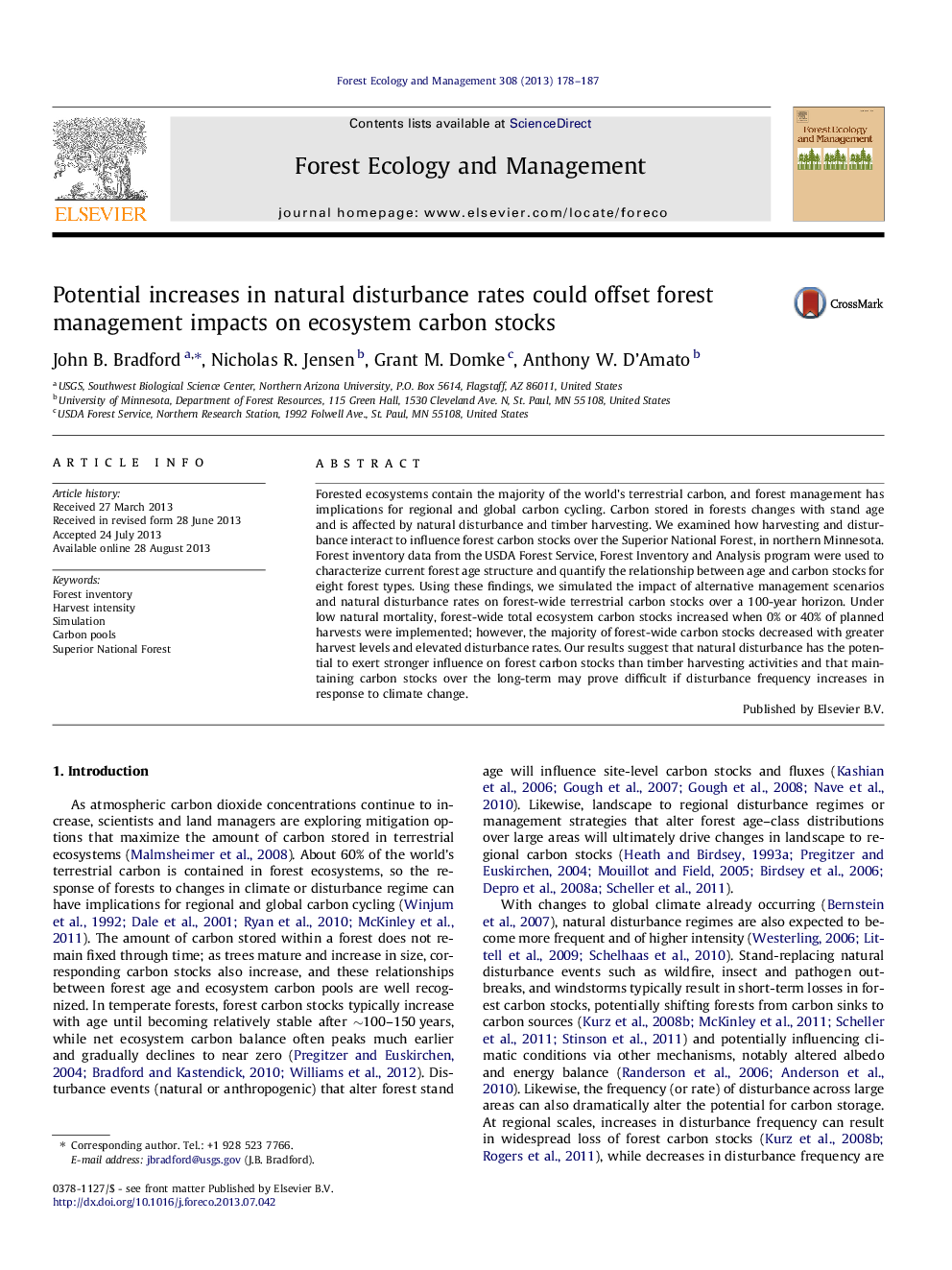| Article ID | Journal | Published Year | Pages | File Type |
|---|---|---|---|---|
| 6543979 | Forest Ecology and Management | 2013 | 10 Pages |
Abstract
Forested ecosystems contain the majority of the world's terrestrial carbon, and forest management has implications for regional and global carbon cycling. Carbon stored in forests changes with stand age and is affected by natural disturbance and timber harvesting. We examined how harvesting and disturbance interact to influence forest carbon stocks over the Superior National Forest, in northern Minnesota. Forest inventory data from the USDA Forest Service, Forest Inventory and Analysis program were used to characterize current forest age structure and quantify the relationship between age and carbon stocks for eight forest types. Using these findings, we simulated the impact of alternative management scenarios and natural disturbance rates on forest-wide terrestrial carbon stocks over a 100-year horizon. Under low natural mortality, forest-wide total ecosystem carbon stocks increased when 0% or 40% of planned harvests were implemented; however, the majority of forest-wide carbon stocks decreased with greater harvest levels and elevated disturbance rates. Our results suggest that natural disturbance has the potential to exert stronger influence on forest carbon stocks than timber harvesting activities and that maintaining carbon stocks over the long-term may prove difficult if disturbance frequency increases in response to climate change.
Related Topics
Life Sciences
Agricultural and Biological Sciences
Ecology, Evolution, Behavior and Systematics
Authors
John B. Bradford, Nicholas R. Jensen, Grant M. Domke, Anthony W. D'Amato,
